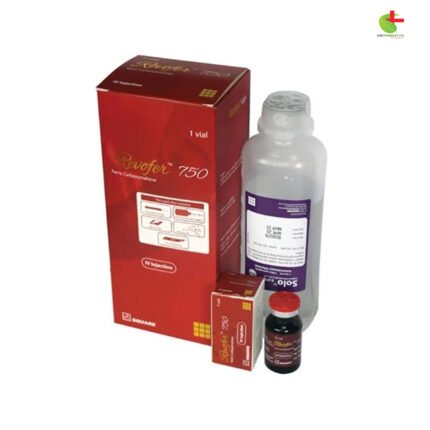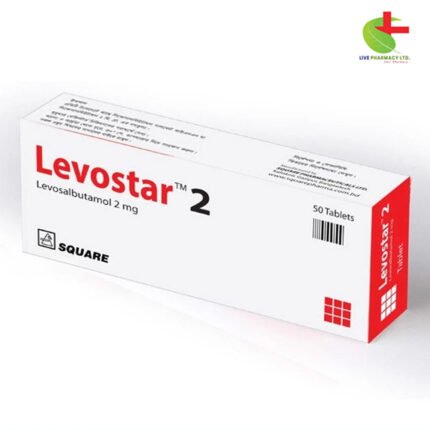Trevox 500
170.00৳ Strip
- Potent Antibacterial Solution: Trevox is expertly designed to tackle various infections, spanning sinusitis, skin issues, and more.
- Active Ingredient: Formulated with levofloxacin, a third-generation fluoroquinolone, Trevox effectively inhibits bacterial enzymes crucial for DNA replication and repair.
- Broad-Spectrum Action: Trevox’s broad-spectrum activity targets both gram-negative and gram-positive microorganisms, ensuring thorough treatment.
- Versatile Administration: Available in both oral and intravenous formulations, Trevox offers flexible dosing options for precise infection management.
- Guided Treatment: Trevox dosing aligns with medical recommendations, ensuring optimal efficacy and patient safety.170.00
 Brand
Brand
|
Square Pharmaceuticals PLC |
|---|---|
 Generics
Generics
|
Levofloxacin Hemihydrate |
Indications
Trevox is formulated to address a wide spectrum of infections, spanning from mild to severe, caused by susceptible strains of various microorganisms. These include:
- Acute maxillary sinusitis attributed to Streptococcus pneumoniae, Haemophilus influenzae, or Moraxella catarrhalis.
- Acute bacterial exacerbation of chronic bronchitis caused by Staphylococcus aureus, Streptococcus pneumoniae, Haemophilus influenzae, or Moraxella catarrhalis.
- Community-acquired pneumonia stemming from Staphylococcus aureus, Streptococcus pneumoniae, Haemophilus influenzae, Klebsiella pneumoniae, Moraxella catarrhalis, Chlamydia pneumoniae, Legionella pneumophila, or Mycoplasma pneumoniae.
- Uncomplicated and complicated urinary tract infections due to Escherichia coli, Klebsiella pneumoniae, or Staphylococcus saprophyticus.
- Acute pyelonephritis caused by Escherichia coli.
- Uncomplicated and complicated skin and soft tissue infections, encompassing abscesses, cellulitis, furuncles, impetigo, pyoderma, and wound infections, attributed to Staphylococcus aureus, Streptococcus pyogenes, Proteus mirabilis, or Enterococcus faecalis.
- Enteric infections caused by Enterobacter sp., Escherichia coli, Campylobacter sp., Vibrio cholerae, Shigella sp., or Salmonella sp.
Description
Trevox is a synthetic, broad-spectrum third-generation fluoroquinolone derivative antibacterial agent intended for oral administration. Chemically, levofloxacin, its active ingredient, is a chiral fluorinated carboxyquinolone.
Pharmacology
Levofloxacin, a synthetic broad-spectrum third-generation fluoroquinolone antibiotic, operates by inhibiting bacterial topoisomerase IV and DNA gyrase, crucial enzymes for DNA replication, transcription repair, and recombination. It demonstrates in vitro activity against a broad range of gram-negative and gram-positive microorganisms.
Dosage
For optimal efficacy, the recommended dosage for Levofloxacin Tablets is 250 mg, 500 mg, or 750 mg, administered orally every 24 hours. Levofloxacin tablets can be taken irrespective of meals. Levofloxacin oral solution should be ingested one hour before or two hours after eating.
Levofloxacin injection is designated for intravenous infusion only. The usual dosage is 250 mg or 500 mg, administered via slow infusion over 60 minutes every 24 hours, or 750 mg over 90 minutes every 24 hours. Given the single-use nature of Levofloxacin injections, any unused portion should be discarded. It is not recommended to add additives or other medications to Levofloxacin Injection or infuse simultaneously through the same intravenous line.
Administration
Follow these instructions for the administration of Levofloxacin Infusion:
- Ensure the container is leak-free by firmly squeezing the inner bag.
- Do not use if the solution appears cloudy or contains a precipitate.
- Avoid using flexible containers in series connections.
- Close the flow control clamp of the administration set.
- Remove the cover from the port at the bottom of the container.
- Insert the piercing pin of the administration set into the port with a twisting motion until firmly seated.
- Suspend the container from the hanger.
- Adjust the drip chamber to establish the proper fluid level during the infusion.
- Open the flow control clamp to expel air from the set, then close the clamp.
- Regulate the rate of administration with the flow control clamp.
Interaction
Avoid co-administration of any quinolone with solutions containing multivalent cations such as magnesium through the same intravenous line. Trevox’s absorption can be reduced by antacids, iron, and adsorbents. NSAIDs may heighten the risk of CNS stimulation, while warfarin may increase the risk of bleeding.
Contraindications
Trevox is contraindicated in individuals with a history of hypersensitivity to levofloxacin, quinolone antimicrobial agents, or any other components of this product.
Side Effects
While generally well-tolerated, Trevox may induce a few side effects. These include nausea, vomiting, diarrhea, abdominal pain, flatulence, and rare instances of phototoxicity (0.1%). Rare side effects may encompass tremors, depression, anxiety, confusion, etc.
Pregnancy & Lactation
Levofloxacin is not recommended during pregnancy or nursing, as its effects on the unborn child or nursing infant are unknown.
Precautions & Warnings
During Trevox administration, adhere to the following precautions:
- Administer Trevox Injection only via slow intravenous infusion over 60 or 90 minutes, depending on the dosage.
- Ensure adequate hydration to prevent concentrated urine formation.
- Adjust dosage cautiously in the presence of renal insufficiency.
Overdose Effects
Although Trevox exhibits low potential for acute toxicity, in cases of acute overdosage, promptly empty the stomach and maintain appropriate hydration while observing the patient.
Therapeutic Class
Trevox belongs to the class of 4-Quinolone preparations.
Storage Conditions
Store Trevox below 30°C, away from light and moisture, and keep it out of the reach of children.













Reviews
There are no reviews yet.